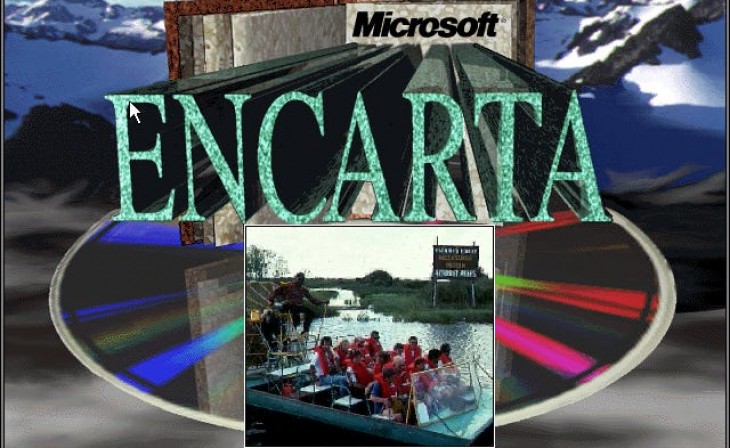The Rise and Fall of Microsoft Encarta: A Retrospective
The Pre-Internet Era and the Need for Knowledge
The Digital Alternative: CD-ROM Encyclopedias
The 1990s saw the internet in its infancy - slower, smaller, and harder to navigate. The launch of the CD-ROM in 1985 offered an alternative: digital encyclopedias. Grolier’s text-only Academic American Encyclopedia on CD-ROM was an early entrant, though expensive alongside the cost of a CD-ROM player.
The Advent of Multimedia Encyclopedias
Early Innovations
The late 1980s brought significant developments with sound cards and the VGA display standard, allowing for richer multimedia experiences. Britannica’s release of Compton's Multimedia Encyclopedia marked a new era, featuring speeches, music, and animated images.
Price Wars and Technological Advances
By the early 90s, multimedia encyclopedias like New Grolier and Compton's Interactive Encyclopedia incorporated video content, though at a substantial cost. Microsoft entered the scene late with Encarta in 1993, based on Funk & Wagnalls encyclopedia, matching the price of its competitors but lacking a significant market share initially.
Also Check Revisiting the AMD Radeon RX 5700 XT: Performance Analysis 3 Years On
Microsoft Encarta: A Game-Changer
Dominating the Market
By the end of 1993, Microsoft slashed Encarta’s price to $99, making it the best-selling CD encyclopedia. This aggressive pricing, coupled with the release of the 1994 Edition, solidified its market position.
What Made Encarta Attractive?
Encarta’s appeal lay in its user-friendly features - searchable articles, multimedia galleries, and internal links, much like modern Wikipedia. Other notable features included a timeline, atlas, and the MindMaze mini-game.
The Multimedia PC Era and Encarta's Evolution
Visual and Content Upgrades
Encarta '95 saw significant improvements in visual quality and content, aligning with the emergence of “Multimedia PCs” which boasted improved graphics and sound capabilities.
The Internet Challenge and Encarta’s Response
Competing with the Internet
The internet's growth initially seemed to complement Encarta, with the 1997 version offering monthly updates and web links. However, the burgeoning internet content and multimedia led to an increase in the number of discs required for Encarta, later transitioning to DVD format.
The Decline of Encarta
Wikipedia's Emergence
The early 2000s witnessed Wikipedia's rapid rise, surpassing Encarta in the number of articles. Wikipedia's expansive, user-generated content model and free access gave it a distinct advantage.
Outsourcing and the End of Encarta
In 2005, Encarta’s maintenance was outsourced to Websters Multimedia. Despite efforts like introducing Encarta Kids, the allure of free, easily accessible information on Wikipedia led to Encarta’s gradual decline. By 2009, Microsoft ceased all sales of Encarta, and by the end of the year, took down all related websites, retaining only the Encarta Dictionary until 2011.
Reflections on Encarta’s Legacy
The End of an Era
The fall of Encarta marked the end of an era for offline digital encyclopedias. While paid electronic encyclopedias like Britannica still exist, the need for such offline resources has diminished in the age of instant, online information access.
Nostalgia and Impact
For many, Encarta and its competitors symbolized the realization that encyclopedias could be as engaging as games, blending education with entertainment. The legacy of Encarta lives on in the memories of those who experienced a world of knowledge differently, in the nascent days of digital exploration.




